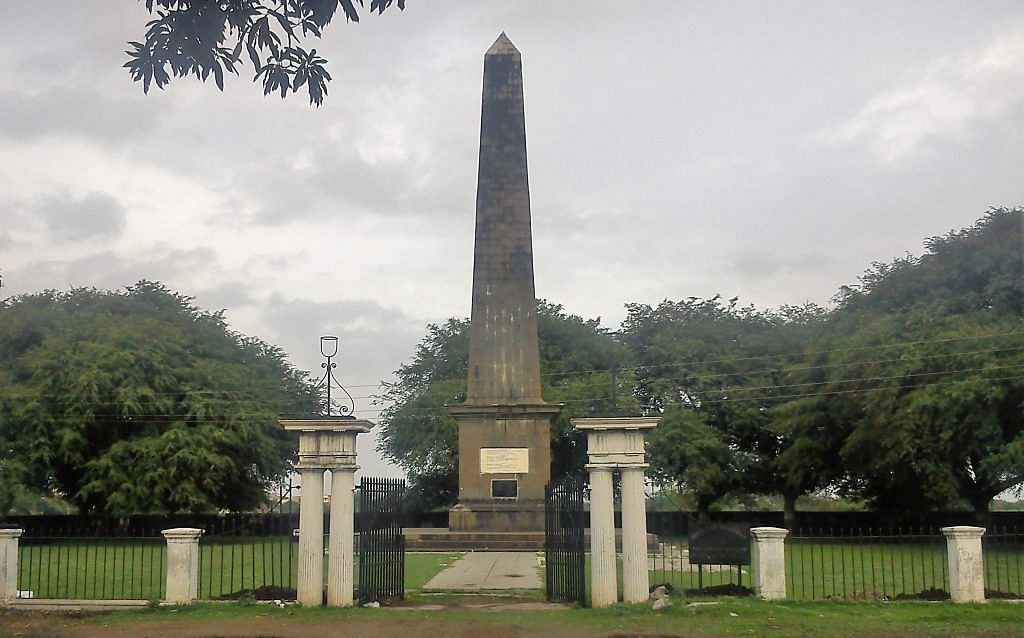The Koregaon celebration by Dalits questions the dominant notion of nation and nationalism. This is why anxious upper caste groups call it “anti-national”.
The celebration of the Bhima Koregaon battle points to a re-emergence and celebration of Dalit militancy. The commemoration and celebration of Bhima Koregaon revolves around the defeat of Peshwas by the untouchable soldiers of the colonial army at that time. It was fought 200 years ago, and is a prideful and heroic chapter of Dalit historical memory.
Acknowledging and remembering this battle – by turning up in such large numbers and assembling at the site – actually runs counter to the normative aspect of the caste system, which does not allow space to a Dalit to act as a militant.
Ancient Hindu scriptures like the Manusmriti have mentioned very clearly that a Dalit, or the lower caste Shudras and the Ati-Shudras, do not have the right to even have this force in their defence. Koregaon remembrance also goes against this very idea of what we call caste normalcy.
It challenges the dominant Hindu-nationalist perspective about Dalits – as a polite, manageable community silently suffering the existing caste hierarchies and caste injustice. By celebrating Koregaon in this manner, Dalits are saying ‘No’. They are saying: “We will celebrate the militancy that is part of our history”. Upper castes have either stifled our histories, or twisted them because they don’t find them suitable for continuing their narrative of Hindu nationalism. To retain their hold on history, they reject the notion of parallel histories.
Now, Dalits have begun to search, locate and assert their own presence in India’s history.
Going to these sites has become a sort of alternate folk culture for both rural and urban Dalits. People are coming to Koregaon from states like Uttar Pradesh and Karnataka as well. Over the years, its hold on Dalit memory and consciousness has expanded.
With the spread of the internet, social media platforms and new Dalit web portals, there is a renewed effort to consolidate and reclaim Dalit histories and sites of resistance or memory. Now in India, we have also begun to observe Dalit History Month, which helps in this effort. The celebration at Koregaon is situated in this spectrum.
B.R. Ambedkar himself actively researched and visited such sites of Dalit history. He used to visit Bhima Koregaon every year, he even conducted a big conference there. Ambedkar continued the legacy of Dalit militancy when he formed the Samata Sainik Dal.
Ambedkar showed that militancy refers to a resolve to not be stopped, or threatened by any other force that is looking to subjugate you. And if the protection of the self is required, one is ready to do so by any method. He differentiated between the two meanings of the word ‘militancy’.
Now, this celebration is entering the realm of new spaces that Dalits are carving out in the new century. One can see this pattern in the emergence of small groups that are protesting against authorities, like the Bhim Army.
Dalit militancy does not stem from a violent agenda of beating or burning someone, it has to do with the idea of protection and assertion of rights – even through militancy. You can see this energy in the new campus narrative as well. The emergence of ABVP and other powerful right-wing groups with connections with the ruling party and the government is being resisted by Dalit associations in equal measure – whether it is the Ambedkar Students’ Association (ASA) in Hyderabad, the Birsa Ambedkar Phule Students Association (BAPSA) in JNU, or other groups on different campuses.
The right-wing is crafting its own history in a way that often resorts to both physical and epistemic violence. Dalits, on the other hand, resurface their own history by invoking icons like Ambedkar, Periyar, and celebrating their past in the present times. This is causing anxiety and frustration among the upper castes.
The Bhima Koregaon celebration in Pune and Maharashtra is being opposed by right-wing groups. They are calling it “anti-national”, because Dalit and Ambedkarite groups are going to visit the Shaniwar Wada (headquarters of the Peshwas) also. Dalits are saying that we ended the brutal rule of the Peshwas, and this is our celebration. They are dancing there, they are also showing their newfound militant prowess by doing akhadas and kushti. Many people who were in the Mahar battalion, who are still in the force, are also visiting the place.
It is questioning the dominant notion of nation and nationalism. This is making the upper-caste groups in Maharashtra anxious.
Even when Ambedkar started the SSD, the savarna community had hailed it as a violent force, but he made it very clear that this was for Dalits’ safety and protection. But even then, all the liberals, progressives, and conservatives were not convinced. It is unlikely that the celebration of Bhima Koregaon will easily enter the mainstream narrative, or be acknowledged by mainstream political parties, because it goes against the very idea of a sacred and pristine nation, and nationalism celebrated both by the progressive and regressive factions in fact.
Therefore, the celebration around Dalit militancy is very specific to the efforts of that marginalised community.
Rahul Sonpimple is a leader with the Dalit Bahujan student group, BAPSA.
